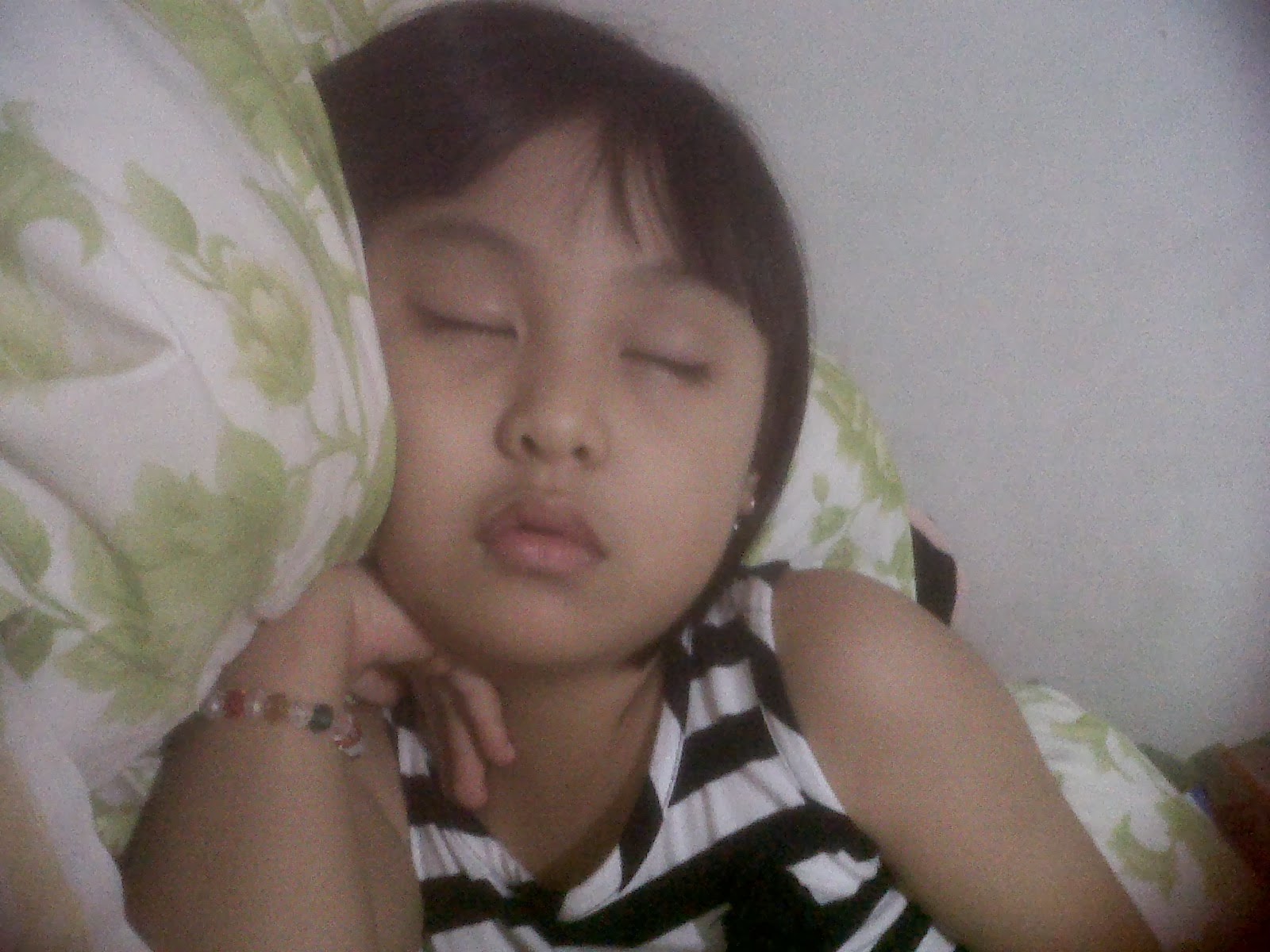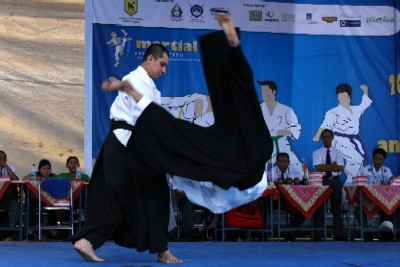Senin, September 15, 2008
30 Days to Success
Kamis, Juli 31, 2008
Persistence
Nothing in the world can take the place of Persistence. Talent will not; nothing is more common than unsuccessful men with talent. Genius will not; unrewarded genius is almost a proverb. Education will not; the world is full of educated derelicts. Persistence and determination alone are omnipotent. The slogan “Press On” has solved and always will solve the problems of the human race. - Calvin Coolidge
Persistence is the fifth and final pillar of self-discipline.
What Is Persistence?
Persistence is the ability to maintain action regardless of your feelings. You press on even when you feel like quitting.
When you work on any big goal, your motivation will wax and wane like waves hitting the shore. Sometimes you’ll feel motivated; sometimes you won’t. But it’s not your motivation that will produce results — it’s your action. Persistence allows you to keep taking action even when you don’t feel motivated to do so, and therefore you keep accumulating results.
Persistence will ultimately provide its own motivation. If you simply keep taking action, you’ll eventually get results, and results can be very motivating. For example, you may become a lot more enthusiastic about dieting and exercising once you’ve lost those first 10 pounds and feel your clothes fitting more loosely.
When to Give Up
Should you always persist and never give up? Certainly not. Sometimes giving up is clearly the best option.
Have you ever heard of a company called Traf-O-Data? What about Microsoft? Both companies were started by Bill Gates and Paul Allen. Traf-O-Data was the first company they started, back in 1972. You can read the story of Traf-O-Data here. Gates and Allen ran it for several years before throwing in the towel. They gave up. Of course they did a little better with Microsoft.
If they hadn’t given up on Traf-O-Data, then we wouldn’t have such rich collections of Microsoft and Bill Gates jokes today.
So how do you know when to press on vs. when to give up?
Is your plan still correct? If not, update the plan. Is your goal still correct? If not, update or abandon your goal. There’s no honor in clinging to a goal that no longer inspires you. Persistence is not stubbornness.
This was a particularly difficult lesson for me to learn. I had always believed one should never give up, that once you set a goal, you should hang on to the bitter end. The captain goes down with the ship and all that. If I ever failed to finish a project I started, I’d feel very guilty about it.
Eventually I figured out that this is just nonsense.
If you’re growing at all as a human being, then you’re going to be a different person each year than you were the previous year. And if you consciously pursue personal development, then the changes will often be dramatic and rapid. You can’t guarantee that the goals you set today will still be ones you’ll want to achieve a year from now.
My first business was Dexterity Software. I started it in 1994, fresh out of college. But after running it for more than a decade, I was ready for something new. I still run Dexterity on the side, but it’s not my full-time focus anymore. It takes me only about an hour or two a week to maintain it, partly because I designed it to be as automated as possible and to provide me with a passive income. It was successful to the extent I wanted it to be. I could have continued to grow it much larger, but I knew I didn’t want to spend the rest of my life making computer games. Creating my own game company was my dream at age 22, and after publishing a couple dozen games, I feel I accomplished that goal. 22-year old Steve is very satisfied. But today I have different dreams.
Did I give up on Dexterity? You could say that, but it would be more accurate to say that I was infected by a new vision of something that was far more important to me. Had I stubbornly persisted with Dexterity, this site would never have existed. I’d be working on a new game instead of my first book.
In order to make room for new goals, we have to delete or complete old ones. And sometimes new goals are so compelling and inspiring that there’s no time to complete old ones — they have to be abandoned half-finished. I’ve always found it uncomfortable to do this, but I know it’s necessary. The hard part is consciously deciding to delete an old project, knowing it will never be finished. I have a file full of game ideas and some prototypes for new games that will never see the light of day. Consciously deciding that those projects have to be abandoned was really hard for me. It took me a long time to come to grips with it. But it was necessary for my own growth to be able to do this.
I still had to solve the problem of setting goals that might become obsolete in a year due to my own personal growth. How did I solve this problem? I cheated. I figured out the only way I could set long-term goals that would stick would be if they were aligned with my own process of growth. The pursuit of personal growth has long been a stable constant for me, even though it’s paradoxically in flux at the same time. So instead of trying to set fixed goals as I did with my games business, I began setting broader more dynamic goals that were aligned with my own growth. This new business allows me to pursue my personal growth full-out and to share what I learn with others. So growth itself is the goal, both for myself and others. This creates a symbiotic relationship, whereby helping others feeds back into my own growth, which in turn generates new ideas for helping others. Anyone who’s been reading this site since last year has probably seen that effect in action.
The direct and conscious pursuit of personal growth is the only type of mission that would work for me. If I made it my mission to master real estate investing, for example, I’d probably become bored with it after a few years. Since I want to keep growing indefinitely, I have to maintain a certain level of challenge and keep raising the bar ever higher. I can’t let things get too dull and risk falling into a pattern of complacency.
The value of persistence comes not from stubbornly clinging to the past. It comes from a vision of the future that’s so compelling you would give almost anything to make it real. The vision I have of my future now is far greater than the one I had for Dexterity. To be able to help people grow and to solve their most difficult problems is far more inspiring to me than entertaining people. These values started oozing out of me as I ran Dexterity because I favored logic puzzle games that challenged people to think, often passing up the opportunity to publish games I felt would make money but which wouldn’t provide much real value to people.
Persistence of action comes from persistence of vision. When you’re super-clear about what you want in such a way that your vision doesn’t change much, you’ll be consistent in your actions. And that consistency of action will produce consistency of results.
Can you identify a part of your life where you’ve demonstrated a pattern of long-term persistence? I think if you can identify such an area, it may provide a clue to your mission — something you can work towards where passion and self-discipline function synergistically.
Rabu, Juli 30, 2008
Sahabat
 Sahabat adalah Dia yang menghampiri
ketika seluruh dunia menjauh.
Karena Persahabatan itu seperti tangan dengan mata.
Saat tangan terluka, mata menangis.
Saat mata menangis, Tangan menghapusnya. Ingatkah Engkau akan sahabat-sahabatmu?
Sapalah mereka hari ini dimanapun mereka berada.
Selamat Hari Persahabatan Sedunia!
By Piauw
Sahabat adalah Dia yang menghampiri
ketika seluruh dunia menjauh.
Karena Persahabatan itu seperti tangan dengan mata.
Saat tangan terluka, mata menangis.
Saat mata menangis, Tangan menghapusnya. Ingatkah Engkau akan sahabat-sahabatmu?
Sapalah mereka hari ini dimanapun mereka berada.
Selamat Hari Persahabatan Sedunia!
By Piauw
Jumat, Juli 25, 2008
Jangan Menyerah
Ketika jalan yang engkau tempuh terasa mendaki,
Ketika uangmu sedikit sementara hutangmu menumpuk,
Dan engkau ingin tersenyum tapi engkau terpaksa mengeluh,
Ketika pekerjaanmu terasa membebanimu,
Istirahatlah jika perlu, tapi jangan menyerah.
Seringkali mimpi lebih dekat daripada yang terlihat oleh
mereka yang lemah dan mudah goyah pendiriannya.
Seringkali orang berhenti berjuang walaupun ia mungkin
bisa mencapai impiannya
Dan ia terlambat mengetahui bahwa impiannya hampir tercapai.
Laksana seberkas cahaya perak di balik awan keraguan,
Dan engkau tidak pernah tahu seberapa dekat dirimu.
Impianmu mungkin sudah hampir tercapai,
walaupun tampaknya masih jauh.
Jadi tetaplah bertahan walaupun engkau sedang terpuruk.
Saat segala hal tidak berjalan sebagaimana mestinya,
Jangan Menyerah!
By Vie
Rabu, Juli 23, 2008
Sebuah Perjalanan
MEREKA YANG MEMILIKI TUJUAN HIDUP MEMELIHARA SEMANGAT. Bangunlah tujuan bidup(DREAM)anda mulai dari sekarang dan berpeganglah padanya ketika anda sedang "jatuh". Mereka yang kehilangan semangat, sama dengan kehilangan hidup. Blog ini dibuat untuk membagikan motivasi dan inspirasi bagi siapa saja yang menjelajahinya, sehingga tetap menjaga semangatnya untuk meraih tujuan hidup.
KEKURANGAN INFORMASI MENYEBABKAN KELUMPUHAN PARADIGMA. Mereka yang menerima hanya sebagian informasi atau bahkan tidak sama sekali akan mengalami kelumpuhan paradigma. Ibarat macan yang lupa caranya mengaum. Blog ini dibuat untuk membagikan informasi kepada penjelajahnya yang bersedia menerima informasi seluas-luasnya demi menghindari kelumpuhan paradigma.
Renungkanlah!!!










